Rabat, Morocco- To where is Morocco heading? That is a question many people ask, one which gets contradictory answers sometimes due to a lack of perspective and shortsightedness. Understanding the question and being able to answer it from different angles would entail the one to dig deep into where the country has come from first. In 1995 king Hassan II declared in a speech in the parliament that Morocco’s economy was facing a heart attack.
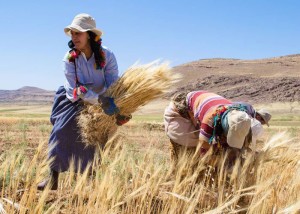
Economically, Morocco had always depended on agriculture, tourism, phosphate minerals, and sales of fish products. All of the aforementioned were the main foundations of the Moroccan economy since independence. This was not enough to spare the country economic troubles and increasing debt. Morocco could not get rid of its dependence on foreign loans. Frequent droughts had a severe knock-on effect on the economy. Two successive years of drought led to a 1% decline in real GDP in 1999 and stagnation in 2000. Foreign investment was weak. Foreign companies that operated in the country had an almost unnoticed effect on the country’s economic growth. Job opportunities were very limited. An important number of people worked in government jobs. Those latter were insufficient to satisfy the growing demand as every year more and more university graduates were looking for jobs.
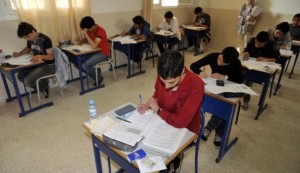
The number of university graduates reached high levels. In addition to the lack of investments that could have reduced increasing unemployment rate, there was a problem with the country’s national education system. The curriculum was traditional, not matching job market needs. Most of what universities offered were majors that produced graduates unable to join the already stagnant job market or make any changes that would help boost the economy. Morocco lacked human capital. It was a difficult barrier for developing a class of entrepreneurs. The ultimate goal of almost any student was to find a stable job with the government, this being universally deemed as a sign of countries with a weak economy. The reality was that thousands of them ended up in front of the parliament in massive relentless demonstrations asking for work, getting beaten and chased by police forces in the streets. A feeling of hopelessness reined and pushed people to start questioning the purpose of education if it would merely lead to either unemployment or illegal immigration.
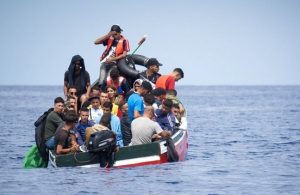
That was the direct outcome. As unemployment peaked along with poverty, the only way out for young people was to leave the country by any means. Thousands of jobless graduates, school dropouts, and illiterate Moroccans boarded small boats and hit the Mediterranean sea looking for a better life offshore (Spain, Italy mainly.) Some could reach the other side, the Eldorado. Thousands drowned in the sea, though. Their corpses were everywhere on national and international media. It was a sign of a troubled Morocco.
Politically, a rising tension was building up. Many political parties and movements were either excluded or oppressed. Freedom of speech was something Moroccans couldn’t think of. All Moroccans born in the eighties know of Driss el Basri, the infamous Minister of Interior, and his severe repression techniques.
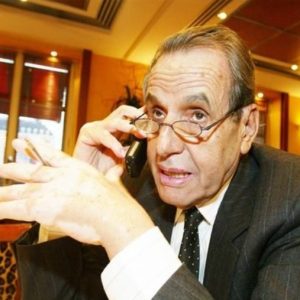
Nonetheless, Morocco had a strong health system. Hospitals offered decent services. People of different social classes resorted to them for satisfying medical care. Public schools were the norm. Very few people sent their kids to private elementary schools. There were no private middle or high schools. Even private higher institutes were very limited, which resulted in a sense of togetherness and shared destiny.
Having this in mind, today after two decades, it is not going to be difficult to talk about the last twenty years at different levels. The overall picture is that it is another Morocco. It is a completely different one. First and foremost, from an economic perspective, of course, because the economy is the driving force of any country.
Morocco is living something unprecedented. The economic system of the country is characterized by a large opening towards the outside world. For the first time in the history of the country, Morocco is no longer relying on agriculture and rain. Foreign investments are booming, creating hundreds of thousands of jobs. Morocco has become an attractive destination for European investors. Waves of qualified and trained young people are actually working in different sectors. Morocco today is a pillar of development in the region. In its African Competitiveness Report of 2014-2015, the World Economic Forum placed Morocco as the 1st most competitive economy in North Africa.
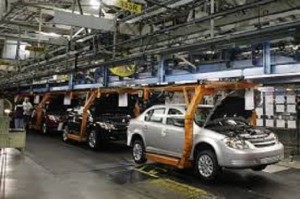
1- The automotive sector is considered as Morocco’s leading export sector. Morocco is now the leading car manufacturer in Africa. This sector has had the strongest job creation pulse in the kingdom; 85 000 new jobs were created between 2014 and 2018, making the total amount of jobs created in the sector a whopping 158, 000.
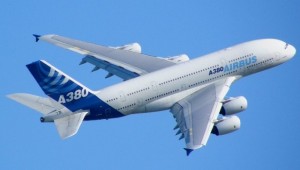
2- Morocco’s aeronautic industry has known a remarkable growth. Thanks to incentives granted to investors, proximity to Europe, low labor costs, stability, and political will. The sector has become a driving force of economic growth and development. Morocco continues to attract foreign investment and gain the trust of giant manufacturers such as the leading American company Boeing.
3- The telecommunications sector in Morocco has witnessed multiple changes that led to its development: regular implementation, the introduction of new operators, and licensing. The sector contributes 7% to annual GDP and is one of the country’s leading recipients of foreign direct investment (FDI). The telecoms sector employs nearly 125,000 people. The call center industry is booming as a result of offshore initiatives.
4- The retail industry makes up 12.8% of Morocco’s GDP employing 1.2m people, 13% of the total workforce. The economic changes that the country is knowing has led to a rapid emergence of a middle class (around 30% of the population), and an increasing purchasing power, along with a young and rising urban population, which has changed Moroccans’ consumption habits. Hundreds of brands have benefited from the country’s openness to the international market, which explains the growing number of malls and luxury shopping centers.
5- Morocco is among the top thirty countries in the offshoring sector. In 2012, the country was elected by the European Association of Offshoring (EOA) as the best offshoring destination of the year. Morocco is recognized as an attractive platform highly appropriate for outsourcing administrative services and IT services for European companies that seek a quality of service at better costs. The offshoring sector in Morocco is of great importance as it employs up to 55 000 people. Offshoring in Morocco started around 2006 and has attracted so far nearly half of the French-speaking call centers that have gone offshore and a considerable number of Spanish ones.
6- Numerous free trade agreements with the United States and the European Union have facilitated the country’s fast integration into the global economy. These agreements have led to the emergence of important export activities in the country.
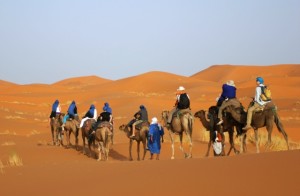
7- Tourism is the second largest foreign exchange earner in Morocco, after the phosphate industry. The Moroccan government is heavily investing in tourism development. The sector has known tremendous growth thanks to Morocco being one of the most politically stable countries in North Africa, its coast, culture, and history, aided by its location, tourist attractions, and relatively low prices. The country’s tourism revenue reached 686 USD mn in January 2020.
8- The construction sector is living remarkable growth as well. The government invests huge amounts of money in infrastructure, energy, and residential housing projects. 80% of turnover from the sector comes from public projects. Meanwhile, the slew of foreign investment in the real estate sector in 2018 demonstrates the high level of international confidence in the market, which is expected to remain strong in the years to come. The construction and real estate sectors are also a part of the investment boom in the country. Increasing public investment in ports, housing development projects, and roads, as well as a boom in the tourism sector, have been a big shot in the arm for the construction sector. The rise in construction activities and efforts to improve infrastructure are creating many opportunities for public-private partnerships. Morocco is being touted as the most popular retirement destination among Europeans because it is inexpensive compared to other European tourist destinations.
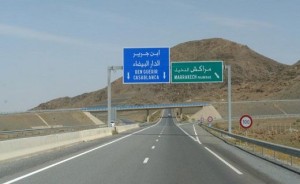
9- As for the infrastructure, for the past 20 years, the government has built about 1770 kilometers of modern roads, linking most major cities via toll expressways. Morocco invested more than $15 billion in upgrading its basic infrastructure. According to the Global Competitiveness Report of 2019, Morocco ranked 32nd in the world in terms of Roads, 16th in Sea, 45th in Air, and 64th in Railways. This gives Morocco the best infrastructure ranking in Africa. Modern infrastructure development, such as ports, airports, and rail links, is a top government priority. Many cities have been renovated and modernized. Cities like Marrakech, Tangier, Tetouan all along the coast till Fnidek, Rabat, Agadir have actually become tourist hubs for Moroccans and millions of tourists worldwide. The country is still planning to extend its highway infrastructure by thousands of kilometers by the horizon 2030, with a focus on linking the southern provinces Dakhla to the rest of Morocco.
10- The Customer service industry as well is reaching important levels with a workforce of hundreds of thousands of employees; the sector contributes 10% to annual GDP and is one of the country’s leading recipients of foreign direct investment.
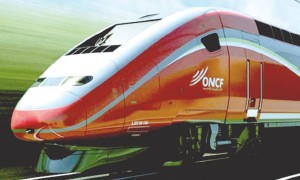
11- Transport has been improved as well with the introduction of modern buses in several cities, tramway lines in the capital, and Casablanca, which has made it easy for students, city dwellers, and tourists to move around avoiding traffic. Last year, Morocco officially launched Africa’s first high-speed train (TGV). The result of a partnership between Morocco’s national railway operator and SNCF, it will cut travel times between Tangier, Rabat, and Casablanca in half. The ambitious project marked the start of the high-speed rail era in Morocco. The country is working on a second line between Casablanca and Agadir, via Marrakech.
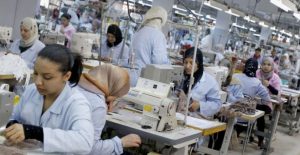
12- Textiles form a major industry in Morocco. The textile industry employs approximately 200,000 people which makes it a large employer for the country, 27% of jobs, and 7% of the industrial added value. T&C exports represent about 15% of the Moroccan industrial GDP with a value of up to 38 billion Moroccan dirhams (MAD). The European Union is Morocco’s top client. The sector is facing fierce competition, though.
Education:
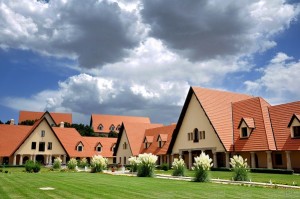
Education has been remodeled to serve Morocco’s economic needs. The king himself, in one of his speeches in 2019, has urged the youth to get training that would allow them to find a job, rather than go to university and major in a traditional field that would lead them to unemployment and financial struggle. The king was very straight forward in giving importance to the need for skills. That is the new trend; rather than targeting government jobs, education is now more oriented towards skill and expertise.
Yet, education is today double-edged, with two distinct facades. As mentioned above, education has started to serve economic growth, which has never been the case in this country. The gloomy side is that this kind of education is not available to all. There are actually public schools that offer such education, but the seats are extremely limited and competition to access them is extremely high. Those who cannot deal with the competition and have the financial means can instead enroll in one of the numerous private schools that have mushroomed in most big cities to guarantee themselves a job with a decent wage. The others, however, would have to join the vocational schools that train people for manufacturing jobs with lower salaries or join universities to study fields that their parents had followed decades ago. It is no surprise that some would feel a sort of discrimination, a social division, or injustice in access to a rewarding education.
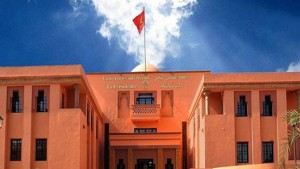
Additionally, in 2005 Morocco launched a voluntary retirement program for tens of thousands of public servants who wanted to leave. It has allotted millions of dirhams to make the offer appealing with the aim of employing the university graduates who have been in unemployment for years. This has brought about a social relief and turned a gloomy page for thousands of families across the country. It has also allowed the country to revive its personnel and inject energy in the public sector, though the country had lost (apart for the money) its most qualified experts in certain fields like education and medicine.
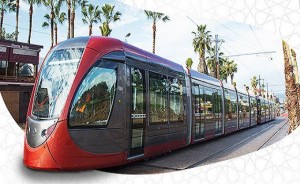
Another axis that the country hinges on is self-employment. This year, king Mohamed VI launched a MAD 6 billion national project to support entrepreneurship in the country. Young people with business ideas could get a loan from banks with only a 2 percent interest rate in cities and 1.75% in rural areas. This initiative, added to the opportunities that are already there, represents an additional initiative to boost the economy.
This economic and educational relief has had its effects on the youth. Today, qualified young people seem more active, having multiple options with multiple job opportunities either in the public or private sectors or even abroad. The less qualified do not face unemployment with the rising need for trained manpower. Those who opted for academic studies fill the empty government spots left by those who retired, though not all of them. What is more pleasing is the fact that even those who have had no education or certification – who could have had no chance in Morocco 20 years ago – find their place in various low paying jobs as security agents, for instance, a sector that hires tens of thousands across the country. Immigration is still an option for many, but not as high as it used to be, especially for the case of illegal immigration.
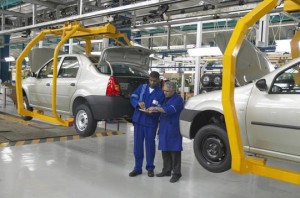
Politically speaking, a number of parties that have long been marginalized as the PPS, representing the left-wing, and the PJD, the right one, have had their chance to come to government, in 1998 and 2012, respectably. The bar of freedom of expression has been raised quite high (for some time) for the last 20 years indeed, but lowered as well, unfortunately. Morocco has been spared the brunt of the Arab spring in 2011 thanks to the regime’s ability to be politically flexible, but also principally thanks to the drastic and smart economic reforms that the country has known. Morocco knows political stability that many similar countries in the region lack. It is this stability that is pushing the country forward.
Socially speaking what still needs to be worked on is education, health care, justice, and mechanism to implement already existing laws.
Where is Morocco going? Morocco is moving towards becoming an economic power in the region and an important business partner for Europe. The expectations are high and the future is prominent.


